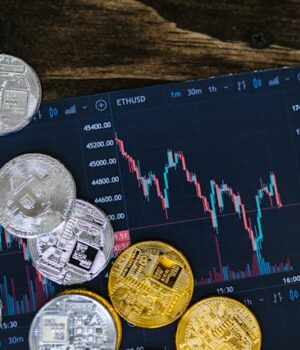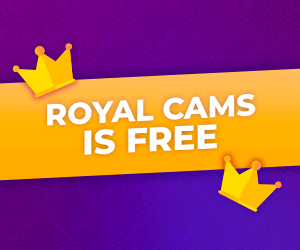I wasn’t looking for a new exchange when I found it. Like most people who have been trading crypto for a few years, I had my go-to platforms, each with their own quirks. One was great for buying with fiat, another for accessing niche tokens, and one for futures trading. I tolerated their flaws because I didn’t expect perfection. And one of the biggest flaws I had come to accept was hidden fees.
It’s not just the obvious trading fee that eats into your profits. On many platforms, there’s the spread — the quiet difference between the market price and what you actually pay. Then there are withdrawal charges that seem far higher than the actual network fees, or currency conversion rates that are mysteriously worse than the market average. After a while, you stop thinking about them. They become part of the cost of doing business.
So when I came across an exchange advertising “zero hidden fees,” I was skeptical. I’ve been around crypto long enough to know that “zero” usually comes with an asterisk. Sometimes it means there’s no commission, but the spread is inflated. Other times it means your first few trades are free, but the withdrawal fees will quietly take back everything you saved. Still, curiosity won. I decided to test it with a small trade, fully expecting to spot the catch.
The first surprise was that there was no catch. The market price I saw on the order screen matched exactly what I got when the trade executed. The confirmation page showed the trading fee upfront, and when I checked my wallet afterward, the amount received was exactly what I’d calculated. No unexplained subtractions. No “adjustments.” It was a simple, clean transaction.
That first experience made me want to dig deeper. I tried different trading pairs, from major coins like BTC and ETH to less common altcoins. I swapped small amounts and larger sums, placed both market and limit orders, even tested during high volatility when spreads usually widen. Every time, the result was the same: no hidden costs. The trading fee was the only cost, and it was clearly stated before I hit confirm.
Withdrawals were where I expected to see the trick. Many platforms claim to have low trading fees but inflate their withdrawal fees far above the actual blockchain cost. Here, the withdrawal fee matched the real network fee. If the blockchain was congested, it cost a little more; if it wasn’t, it cost less. There was no flat “service charge” added on top. This level of transparency was refreshing in an industry where even the best low fee crypto exchange lists often gloss over withdrawal policies.
I started comparing side by side with my usual platforms. On a $1,000 BTC trade, I ended up with anywhere from $8 to $15 more just because there were no hidden fees eating into the transaction. That might not sound like much on one trade, but for active traders, that difference compounds over dozens or hundreds of trades. For smaller traders, it means you can enter and exit positions more freely without worrying that fees will wipe out small gains.
Part of what impressed me was the platform’s honesty about its revenue. They didn’t pretend to be a charity. The income came from a fixed, transparent trading commission and optional premium features like advanced order types, priority withdrawals, and API access for high-frequency traders. There was no guesswork about how they made money. That transparency built trust faster than any flashy promotion ever could.
It also changed my trading habits. On other platforms, I sometimes hesitate to rebalance my portfolio because I know I’ll pay not just the trading fee but also lose value in the spread. Here, I could make more frequent adjustments without worrying that I was being quietly drained. It gave me the freedom to act on opportunities in the market rather than holding back out of fee anxiety.
Of course, no platform is perfect. I still spent time researching before moving significant funds over. I looked at their security measures — cold storage for the majority of assets, multi-signature wallets, and mandatory two-factor authentication for withdrawals. I checked whether they were licensed in any jurisdictions and how they handled user data. I also tested their customer support with a minor issue to see how quickly they responded. Everything came back positive, though I still recommend anyone do their own due diligence before committing.
The more I used it, the more I realized how rare this level of clarity is in crypto. Exchanges have a long history of hiding costs in places most users don’t think to look. Even platforms that market themselves as “low fee” sometimes bury extra charges in currency conversions or quietly adjust price feeds to their advantage. When you find a place that doesn’t play those games, it feels almost strange — like you’re waiting for the bad news that never comes.
There’s also a psychological benefit that’s hard to measure. Trading without hidden fees makes you a more confident trader. You don’t spend mental energy second-guessing whether you’re being taken advantage of. You can focus on execution, strategy, and market analysis rather than accounting for invisible costs. It’s a subtle shift, but over time, it makes a big difference.
I still keep accounts on multiple platforms because no single exchange covers every need. Some are better for fiat on-ramps, others for niche DeFi tokens, others for derivatives. But for spot trading, especially in larger amounts, this zero-hidden-fee exchange has become my first choice. It’s the one I recommend to friends who are new to crypto, because it lets them start without learning the hard way about “the real cost” of trading.
If you’re trying to figure out how to avoid exchange fees, the answer isn’t just finding the platform with the lowest advertised commission. It’s finding the one that doesn’t add costs you didn’t agree to. That means checking spreads, withdrawal fees, conversion rates, and execution prices. It means doing a small test trade and verifying that what you see on the order page is exactly what you get in your wallet.
What surprised me most was how much my trust in the exchange made me a better trader. In a market where volatility and risk are part of the game, it’s a relief to have at least one part of the process be predictable. And while zero hidden fees might seem like a marketing gimmick, in this case, it turned out to be the foundation of a much better trading experience.
In the end, I think that’s why this exchange stands out. It’s not about offering something wild or flashy; it’s about delivering exactly what it promises, every single time. In a space where so many platforms compete for attention with giveaways and hype, this one wins by doing the simplest, rarest thing of all — being honest about the cost.







